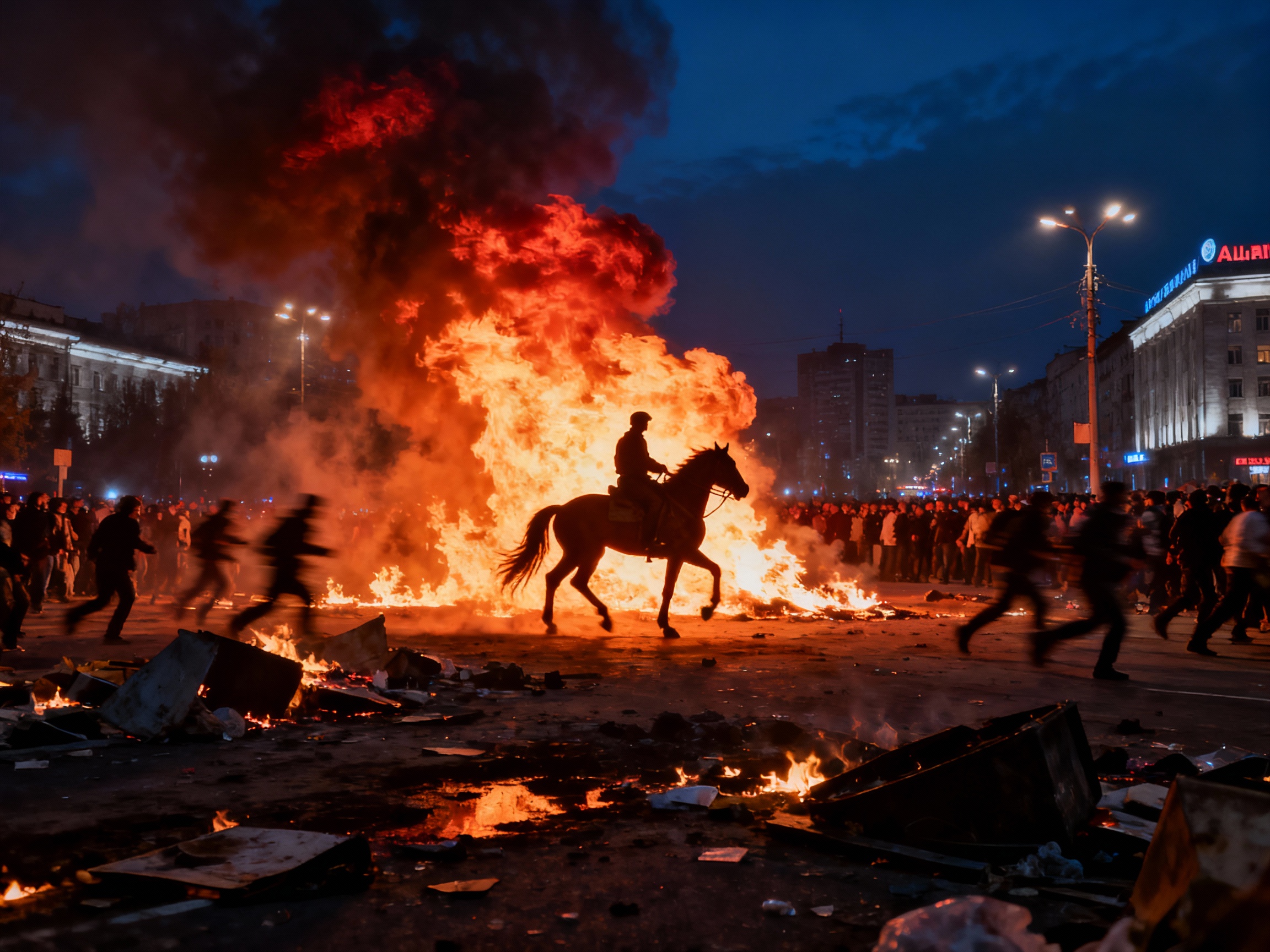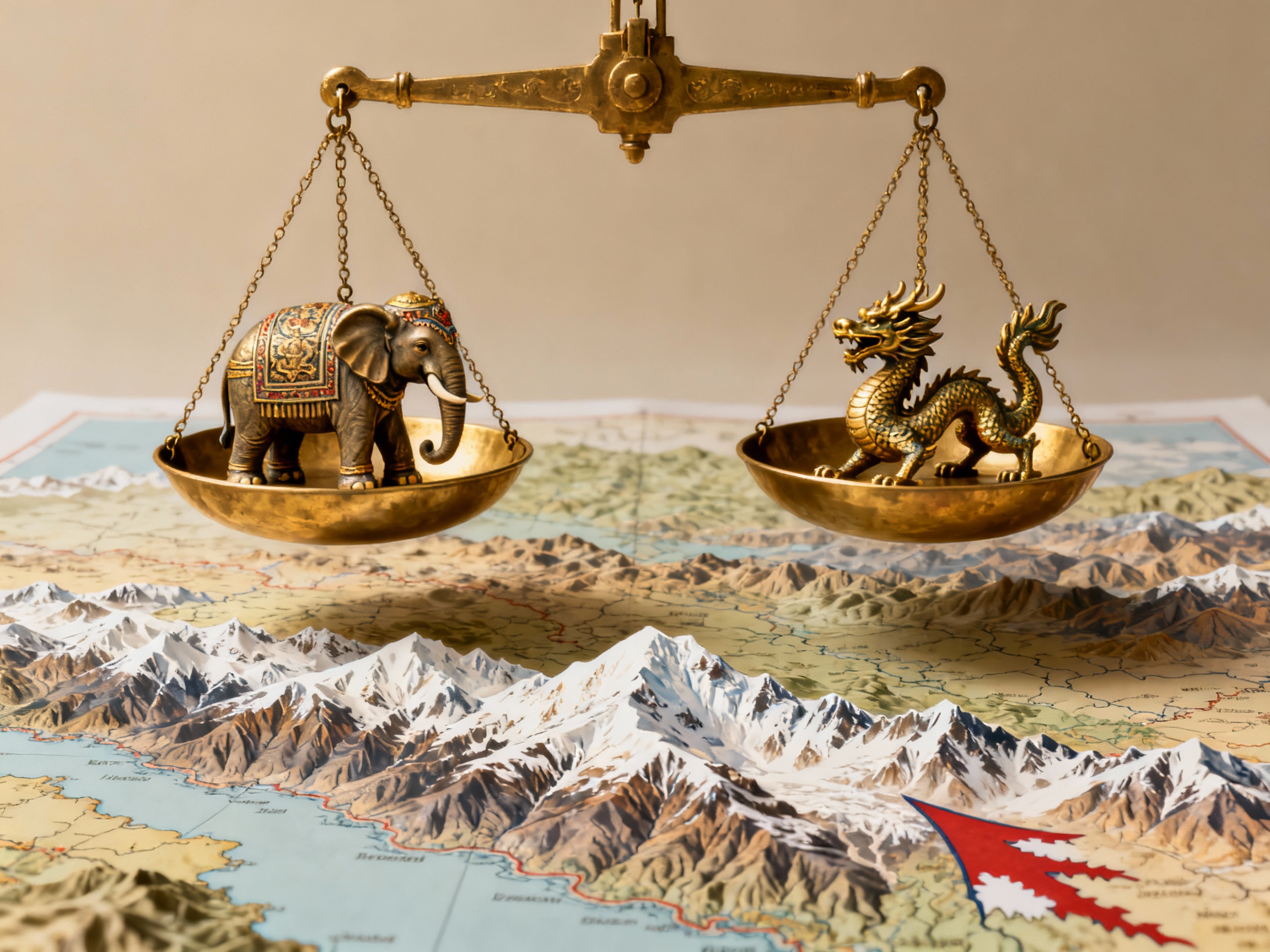Mirror Realities. Why Nepal and Kazakhstan are Reflections of Each Other
Different geography, but the same diagnosis. Kazakhstan and Nepal seem like absolute opposites: one country is squeezed between superpowers in the endless steppe, the other is elevated to the roof of the world among the highest mountains of the Himalayas. But if we listen to the rhythm of their social life, we will hear the same alarming pulse.
This is not a coincidence. It is a systemic pattern. Two countries, separated by thousands of kilometers, have become perfect mirrors for each other to show how public discontent arises in the "second tier" countries of global politics.
Their similarity is built not on trifles, but on fundamental, structural problems:
Geopolitical trap. Both Astana and Kathmandu are forced to skillfully maneuver between giants. For Kazakhstan, it's Russia and China. For Nepal, it's India and China. This is a constant balance on the edge of a knife, where sovereignty is constantly tested for strength. The internal politics of the elites always look back at external players, creating grounds for compromises that are not always beneficial to the people.
Political stagnation. In both countries, the same faces or political forces have been in power for decades. In Nepal, it's the eternal game of the same party elites against the backdrop of instability. In Kazakhstan, it's the Nazarbayev era and a smooth transition of power that did not lead to a radical change of course. This creates a sense of a "closed club" where decisions are made in a narrow circle, and there is no entry for new faces and ideas.
Social divide. This is perhaps the most painful point. And here the coincidences are letter for letter.
Children of the elites: The bright, provocative lifestyle of the "golden youth" in London, Dubai, and Miami, flaunting against the backdrop of ancestral mansions in Nepal or expensive cars in Kazakhstan. Social networks have turned this luxury from rumors into proof, daily flaunting it in the face of those who count pennies until payday.
Expensive life and unemployment: In Almaty and Kathmandu, the same story: housing, gasoline, and food prices are rising by global standards, but salaries are not. High unemployment, especially among young people, creates a giant army of educated, ambitious, and yet completely unnecessary people. They see the hopelessness at home and the shine of the "chosen" life on Instagram. It's an explosive mix.
But this is just a diagnosis. Where are the symptoms? They manifested with frightening similarity.

Ice and Fire. How the Same Discontent Explodes Differently
The same disease can progress differently. In Kazakhstan and Nepal, the people's anger, born from the same source, found two different outlets. One - like a sudden hurricane, sweeping everything in its path. The other - like a methodical arson.
Kazakhstan: Explosion of a Powder Keg (Zhanaozen, January 2022)
The Kazakh scenario is a classic "revolution of unfulfilled expectations". A country with enormous resources that lived relatively stably for a long time. But stability without justice and prospects is a rotten foundation.
The people's anger here was swift, fierce, and apolitical at first. The protest against the rise in liquefied gas prices in Zhanaozen instantly became a spark in a powder keg filled with years of accumulated rage over inequality, corruption, and the impunity of the elites ("clan," as it is called by the people). It was a bottom-up explosion, chaotic and ruthless. Its characteristic feature is massiveness and total distrust of the entire system at once.
Nepal: Targeted Surgery of Anger
The Nepalese scenario is a "sudden revolution". In a country already accustomed to political instability, the anger was more focused. People did not go to smash everything indiscriminately. They went to specific houses of specific officials suspected of corruption.
Their main weapon was not Molotov cocktails, but knowledge and information. Couriers, knowing every alley, became the vanguard because they could lead the crowd precisely to the target. It was not a blind riot, but a conscious, almost methodical action to restore justice. Their motto: "You stole from us - we are coming to your home."
Common in Different:
Despite different tactics, the root is the same - total loss of legitimacy of power. In both Kazakhstan and Nepal, the elites have become so detached from reality that the people ceased to see them as protectors of their interests. They began to be perceived as occupiers, as internal colonizers that need to be expelled.

Lesson from the Mirror. What the Common Future Might Mean for Everyone
By comparing Kazakhstan and Nepal, we are not just studying two distant countries. We see two scenarios for dozens of other states around the world stuck in a transition period between traditional ways and globalization.
Their experience is both a warning and an instruction.
Lesson 1: Stability without development is a time bomb.
It is possible to maintain order and economic growth for years (as in Kazakhstan), but if its fruits are distributed among a narrow group of the chosen ones, and for the majority life only becomes more expensive - the country is sitting on a bomb. Sooner or later a trigger will work: gas prices, election results, the death of a person at the hands of the police. The trigger itself is not important, but the powder it falls on is.
Lesson 2: Social media has erased national borders for discontent.
The "golden youth" from Astana and Kathmandu lead the same lifestyle and flaunt it on the same Instagram. This creates a global language of inequality. A worker in Pavlodar and a farmer in Pokhara see the same picture of luxury and compare it to their own lives. This unifies anger and makes it understandable and common for people from very different cultures.
Lesson 3: There is no universal recipe for protest.
Kazakhstan showed a scenario of total collapse when the system failed on all fronts. Nepal showed a scenario of targeted, almost guerrilla resistance. The form of the people's response depends on specific conditions: how strong the institutions are, how united the civil sector is, whether people have channels for targeted expression of anger.
What does this mean for the future?
Nepal and Kazakhstan are not exceptions. They are prototypes. Their experience shows that the old model, where a small group of elites controls resources and power for decades, balancing between major powers, has exhausted itself.
Globalization and digitalization have made inequality visible, and discontent contagious. The youth no longer want to wait. They see how their peers live in other countries and how their own rulers live.
Both these peoples, each in their own way, sent the world the same message: the era of patience is over. Ignoring the social contract is no longer possible. And if the authorities lose their sense of proportion, the people will always find a way to their gates. Whether they sweep them away with a hurricane or carefully unlock them with the key of information depends on the authorities themselves.

Leave a comment
Comment